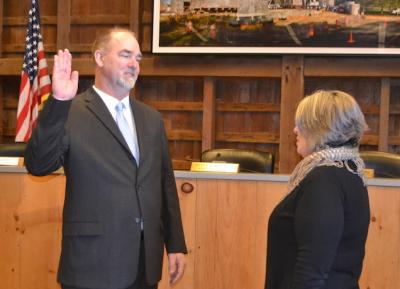Bad Medicine
Bad Medicine

“Deadly Cure”
Lawrence Goldstone
Pegasus Books, $25.95
“Deadly Cure,” a new novel by Lawrence Goldstone, the author of several previous novels as well as a number of nonfiction historical works, takes place in New York City at the dawning of the 20th century. It is September of 1899, and the brand-new age of electricity. “Reading was so much more pleasant by incandescent light. These rooms were his first that did not use gas or oil.”
The novel commences with Dr. Noah Whitestone, a young physician in private practice in Brooklyn, summoned to the wealthy home of Mildred and Aldridge Anschutz. Aldridge is a colonel in the Army, serving in the Philippines, and Mildred is “neighborhood nobility, niece to Brooklyn’s last mayor, Frederick Wurster.” Noah has been called to treat Willard, “her youngest, a rambunctious, perpetually cheerful five-year-old.”
“Mrs. Anschutz had made little secret that she considered Noah too young, too inexperienced, too . . . unacceptable . . . to treat her or her five children. She, like most of the wealthy and the prominent, preferred Arnold Frias, he of the white mane and booming baritone, on the board of directors of four hospitals. . . .” Dr. Frias is rich and powerful and drives a new International Benz automobile, “the first of its kind in Brooklyn.”
When Noah examines Willard, he sees gooseflesh and a runny nose. The child is perspiring heavily, yet he complains of feeling cold and is in agony from stomach discomfort. His eyes are watery and his pupils are dilated. “Noah was stunned. The symptoms seemed classic. But in this house? With a boy of five?”
When the boy runs to the “water closet” Noah tries to follow, but Mrs. Anschutz will not permit it. Noah tells her that he must examine the “product” (to check for blood or mucus), but she says, “You may not! How dare you? Dr. Frias would never think to violate a patient’s privacy so heinously.”
Noah gently inquires if there might be any “morphia” in the house.
“Certainly not! We are not Chinamen or dope fiends in my home.”
Eventually the young physician gives the boy two drops of laudanum (a tincture of opium) in order to help him sleep, and then has to rush off to another house call about a dying man.
When Noah returns a couple of hours later, Willard is barely breathing and subsequently dies in Noah’s arms. Noah is distraught and full of self-doubt about whether he might have somehow missed something regarding the boy’s condition. Should he not have given him the (tiny) dose of laudanum? He takes one of the blue pills that Dr. Frias has prescribed in order to experimentally determine exactly what the boy has been taking. It is clear he suspects morphine. At the time, “each drug company fabricated its own wares,” and it would be impossible to know without testing what this drug contained.
Noah finds out that there is a new (and perfectly legal) drug being tested on children. It is being marketed by the German company Bayer, and is being test-prescribed for children’s coughs. The drug is called Heroin and “is to be marketed throughout the nation in elixirs, tablets, pastilles, and powders. It will be prescribed for asthma, dysentery, nervous disorders, respiratory disease, and, most ironically, as a treatment for morphine addiction. Its most widespread application, however, will be as a cough suppressant, particularly for children.”
Let me repeat this so we are clear: Bayer, the company we all know for its brand of aspirin, brought heroin to the United States in pill form, and marketed it, just as it did its other drugs. This is true!
“This year Bayer will produce a ton of Heroin. They will send the product around the world, but fully half of the production will come to the United States. America has restrictive patents, but almost no safety standards for pharmaceuticals. That combination means that nowhere in the world will Heroin be more profitable.”
The discovery of this fact, and the unearthing of a conspiracy that involves Dr. Frias (paid by Bayer to perform tests on the heroin), crooked cops, and a cast of other nefarious characters who will not hesitate to use violence, kidnapping, and worse to prevent knowledge of the perilous nature of this new drug and the fact that it has already apparently killed several children of the poor (Bayer’s U.S. experimental subjects), takes up the remainder of “Deadly Cure.” It is part historical novel, part medical detective story, part thriller, and part political page-turner and polemic on the lack of oversight for patent medicines.
“There was rarely a newspaper page lacking an advertisement, often with testimonials, extolling some supposed miracle cure. Ayer’s Cherry Pectoral, Mrs. Winslow’s Soothing Syrup, Darby’s Carminative, Godfrey’s Cordial, Dover’s Powder — the list was endless. The hundreds who died each year and thousands more who developed addictions were never mentioned.”
For all of its historical accuracy and interest (and the material is wonderful and captivating), this novel might just as well have been written about the current opioid crisis. With the current political administration rushing to defang nearly every federal agency, including the Food and Drug Administration, and to deregulate business in general, most of what takes place in the novel in 1900 is also occurring today. Except that instead of heroin, we are in the midst of a raging opioid addiction epidemic.
Opioids legally sold by pharmaceutical companies in the form of hydrocodone, oxycodone, and fentanyl are being marketed for outrageous profits and are not being properly regulated. According to a recent study by the National Center for Health Statistics, an arm of the Centers for Disease Control and Prevention, in 2016 there were more than 63,600 drug overdose deaths in the United States as a direct result of opioid use.
Scott Gottlieb, the current head of the F.D.A., spent much of his career working for giant pharmaceutical companies like Vertex Pharmaceuticals, Bristol-Myers Squibb, New Enterprise, GSK, MedAvante, and Glytec. These are the very companies he is supposed to be regulating. Fox, meet henhouse. The parallels with the fictional Dr. Frias and good old-fashioned heroin are unmistakable. The Sacklers, the family that owns Purdue Pharma, have become one of the wealthiest families in the country. Their net worth is around $14 billion, largely based on profits from the sales of OxyContin.
I am giving short shrift to the plot of “Deadly Cure” because I think Mr. Goldstone is making a very direct reference to the issues of today. If this were July, I would say that this novel is a terrific beach read, but since it is winter, let’s just say that if you are looking to curl up by the fire with a fast-paced, interesting historical novel, with lots of plot twists and some relevance to today, this one is a good bet.
Michael Z. Jody, a regular book reviewer for The Star, is a psychoanalyst and couples counselor with offices in Amagansett and New York City.
Lawrence Goldstone lives in Sagaponack.









